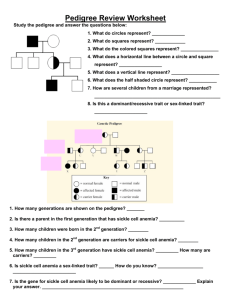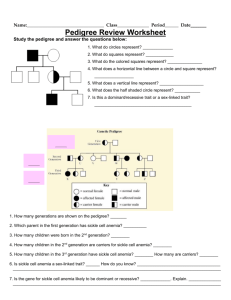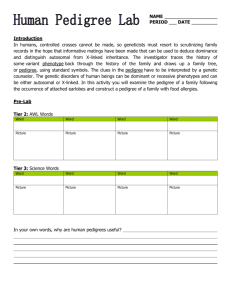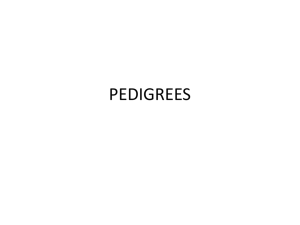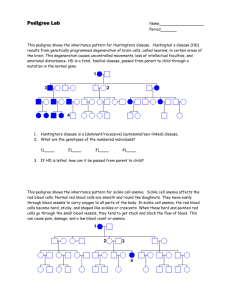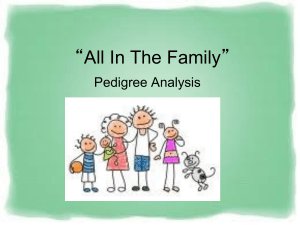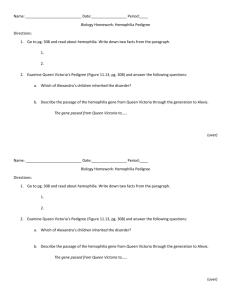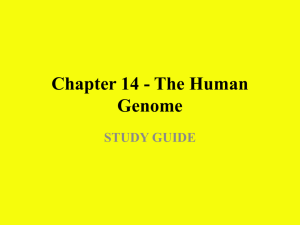Pedigree Review Worksheet
advertisement
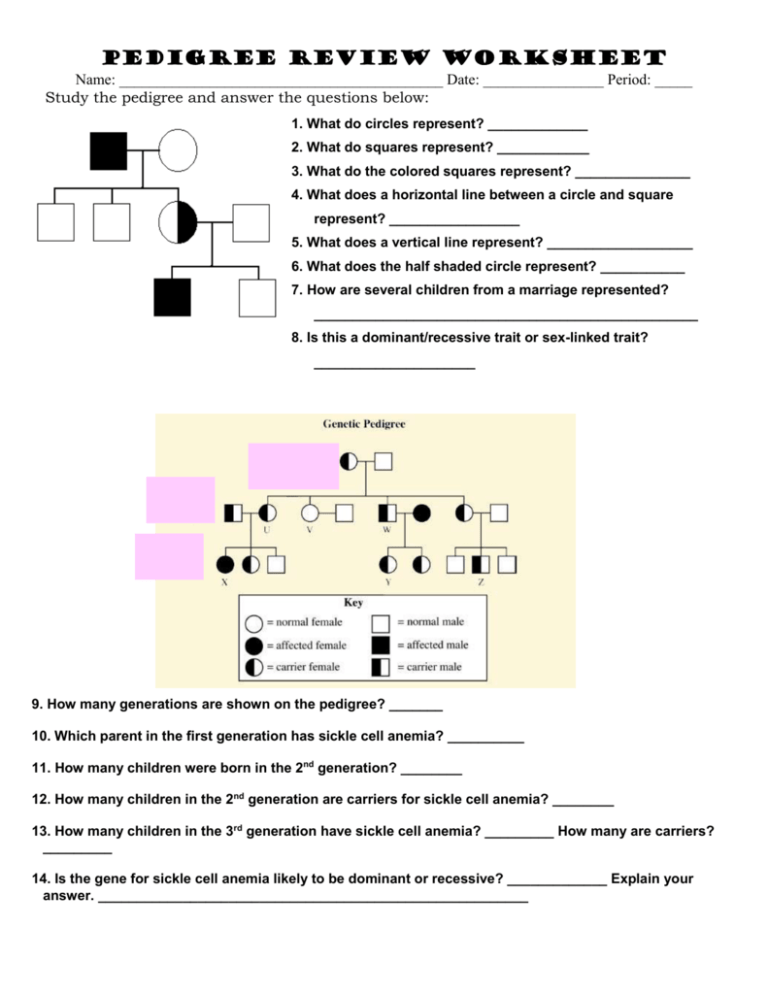
Pedigree Review Worksheet Name: ___________________________________________ Date: ________________ Period: _____ Study the pedigree and answer the questions below: 1. What do circles represent? _____________ 2. What do squares represent? ____________ 3. What do the colored squares represent? _______________ 4. What does a horizontal line between a circle and square represent? _________________ 5. What does a vertical line represent? ___________________ 6. What does the half shaded circle represent? ___________ 7. How are several children from a marriage represented? __________________________________________________ 8. Is this a dominant/recessive trait or sex-linked trait? _____________________ 9. How many generations are shown on the pedigree? _______ 10. Which parent in the first generation has sickle cell anemia? __________ 11. How many children were born in the 2nd generation? ________ 12. How many children in the 2nd generation are carriers for sickle cell anemia? ________ 13. How many children in the 3rd generation have sickle cell anemia? _________ How many are carriers? _________ 14. Is the gene for sickle cell anemia likely to be dominant or recessive? _____________ Explain your answer. ________________________________________________________ Below is part of the pedigree of Queen Victoria of England. This pedigree represents the occurrence of hemophilia in her family. Only part of her family members has been included. Refer to this pedigree to answer the following questions: Queen Victoria 15. How many male grandchildren were hemophiliacs? _______ 16. How many of the great-grandchildren were hemophiliacs? ________ How many were girls? _______ How many were boys? _________ 17. Is it more likely for males or females to get hemophilia? _________ Explain your answer. _______________________________________ 18. Why were all the carriers in Queen Victoria’s family female? _______________________ ___________________________________ The pedigree shows the inheritance of free earlobes and attached earlobes in five generations of a family. Attached earlobes are caused by a recessive allele (f). Figure 14–2 19. Is individual 2 in Figure 14–2 homozygous or heterozygous for free earlobes? __________Explain. ____ _________________________________________ 20. How many children of individuals 4 and 5 have attached earlobes? ________________ 21. Predict the genotype and phenotype of individual 14 in Figure 14–2. ______________________________

